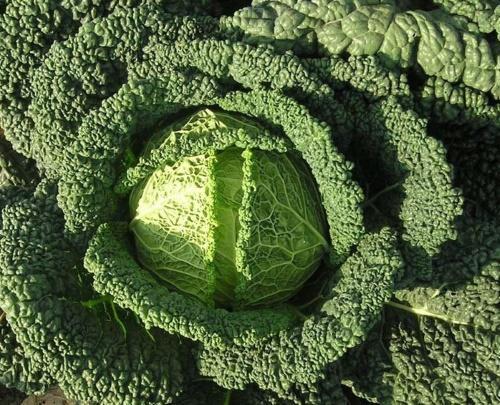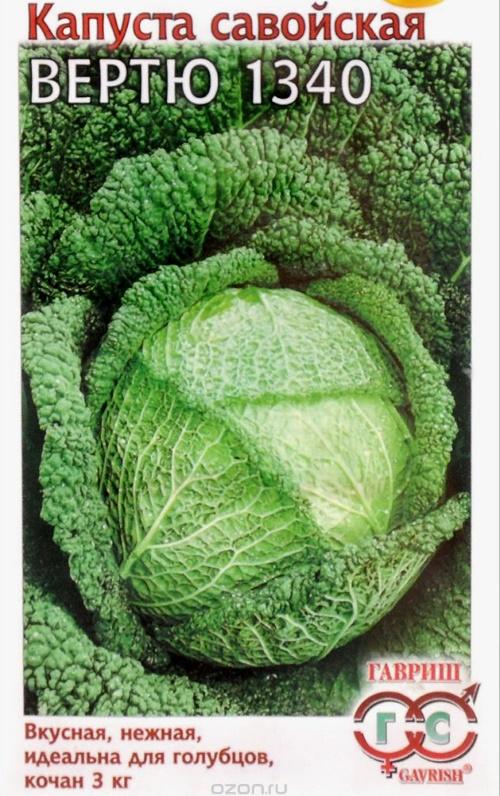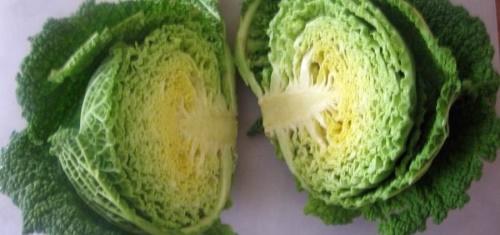Savoy cabbage Vertu - a fruitful tasty variety for salads
 Savoy cabbage for the Russian people is not as "native" as white cabbage. You cannot ferment it for cabbage soup, but when fresh it is simply excellent, especially the Savoy cabbage Vertu. Lovers of greens and vitamin salads have long appreciated this variety with its juicy and soft leaves. Today we will talk about what is so special about him and whether it is difficult to grow Vertya in the beds.
Savoy cabbage for the Russian people is not as "native" as white cabbage. You cannot ferment it for cabbage soup, but when fresh it is simply excellent, especially the Savoy cabbage Vertu. Lovers of greens and vitamin salads have long appreciated this variety with its juicy and soft leaves. Today we will talk about what is so special about him and whether it is difficult to grow Vertya in the beds.
Characteristic features of the variety

 The growing season at Vertu is 150 days. After planting the seedlings, the heads of cabbage ripen in 120 days. They are slightly flattened and not very large, on average about 1.2 kg, but dense enough for Savoy cabbage. Thin corrugated leaves form a raised wide rosette with a diameter of more than 100 cm. The closer to the center of the head of cabbage, the brighter the bright green leaves become.
The growing season at Vertu is 150 days. After planting the seedlings, the heads of cabbage ripen in 120 days. They are slightly flattened and not very large, on average about 1.2 kg, but dense enough for Savoy cabbage. Thin corrugated leaves form a raised wide rosette with a diameter of more than 100 cm. The closer to the center of the head of cabbage, the brighter the bright green leaves become.
Of the advantages of the variety, it is worth noting a good yield and good taste characteristics. However, it is worth noting the exactingness of Vertu cabbage to moisture, intolerance to heat and saline soils. In addition, the variety is characterized by low resistance to keel disease.
Savoy cabbage Vertu: cultivation features
 The best yields of Savoy cabbage are obtained in the southern regions, with warm summers and regular rainfall. The timing of sowing seeds for seedlings also depends on climatic conditions. The later the spring warmth comes, the later you need to sow. It should be borne in mind that the timing of harvesting will also shift. So, cabbage sown at the end of April will ripen at the end of September.
The best yields of Savoy cabbage are obtained in the southern regions, with warm summers and regular rainfall. The timing of sowing seeds for seedlings also depends on climatic conditions. The later the spring warmth comes, the later you need to sow. It should be borne in mind that the timing of harvesting will also shift. So, cabbage sown at the end of April will ripen at the end of September.
To get juicy and large heads of Savoy, it is advisable to fertilize the beds before planting seedlings. To do this, you can add:
- humus or compost;
- wood ash.
When planting between bushes, you must leave a distance of at least 50 cm, including in the aisles. The most important thing is not to allow the soil under the cabbage to dry out, especially during the ripening of the heads. Otherwise, they will start to crack. Plants will respond well to feeding. 2 weeks after planting the seedlings, you need to add ammonium nitrate or mullein infusion. When the heads of cabbage begin to be tied, switch to mineral complexes.
The frequency of feeding is no more than 2 times a month. At the same time, drugs with sodium and chlorine should be used with caution and not overused.
To prevent pests from eating heads of cabbage before you, you need to regularly dust the cabbage with ash. It will also serve as a keel prevention. When the heads stop growing in size, and the lower leaves begin to turn yellow, it's time to cut them off. However, you can leave the cabbage in the beds until early or even mid-October. But as soon as the temperature began to fall below 5 ° frost, cut it off. Heads of cabbage are stored in a cool room, wrapped in plastic.